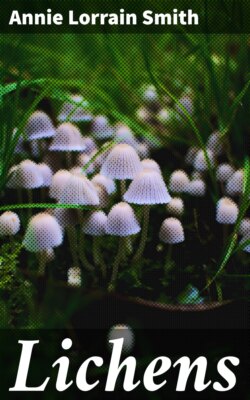Читать книгу Lichens - Annie Lorrain Smith - Страница 62
На сайте Литреса книга снята с продажи.
D. Medulla and Lower Cortex
Оглавлениеa. Medulla. The hyphal tissue of the dorsiventral thallus that lies between the gonidial zone and the lower cortex or base of the plant is always referred to as the medulla or pith. It is, as a rule, by far the most considerable portion of the thallus. In Parmelia caperata (Fig. 49), for instance, the lobes of which are about 300 µ thick, over 200 µ of the space is occupied by this layer. It varies however very largely in extent in different lichens according to species, and also according to the substratum. In another Parmelia with a very thin thallus, P. alpicola growing on quartzite, the medulla measures scarcely twice the width of the gonidial zone. It forms a fairly massive tissue in some of the crustaceous lichens—in some Pertusariae and Lecanorae—attaining a width of about 600 µ.
Nylander[358] distinguished three types of medullary tissue in lichens:
(1) felted, which includes all those of a purely filamentous structure;
(2) cretaceous or tartareous, more compact than the felted, and containing granular or crystalline substances as in some Pertusariae; and lastly
(3) the cellular medulla in which the closely packed hyphae are divided into short cells and a kind of plectenchyma is formed, as in Lecanora (Psoroma) hypnorum, in Endocarpon, etc.
